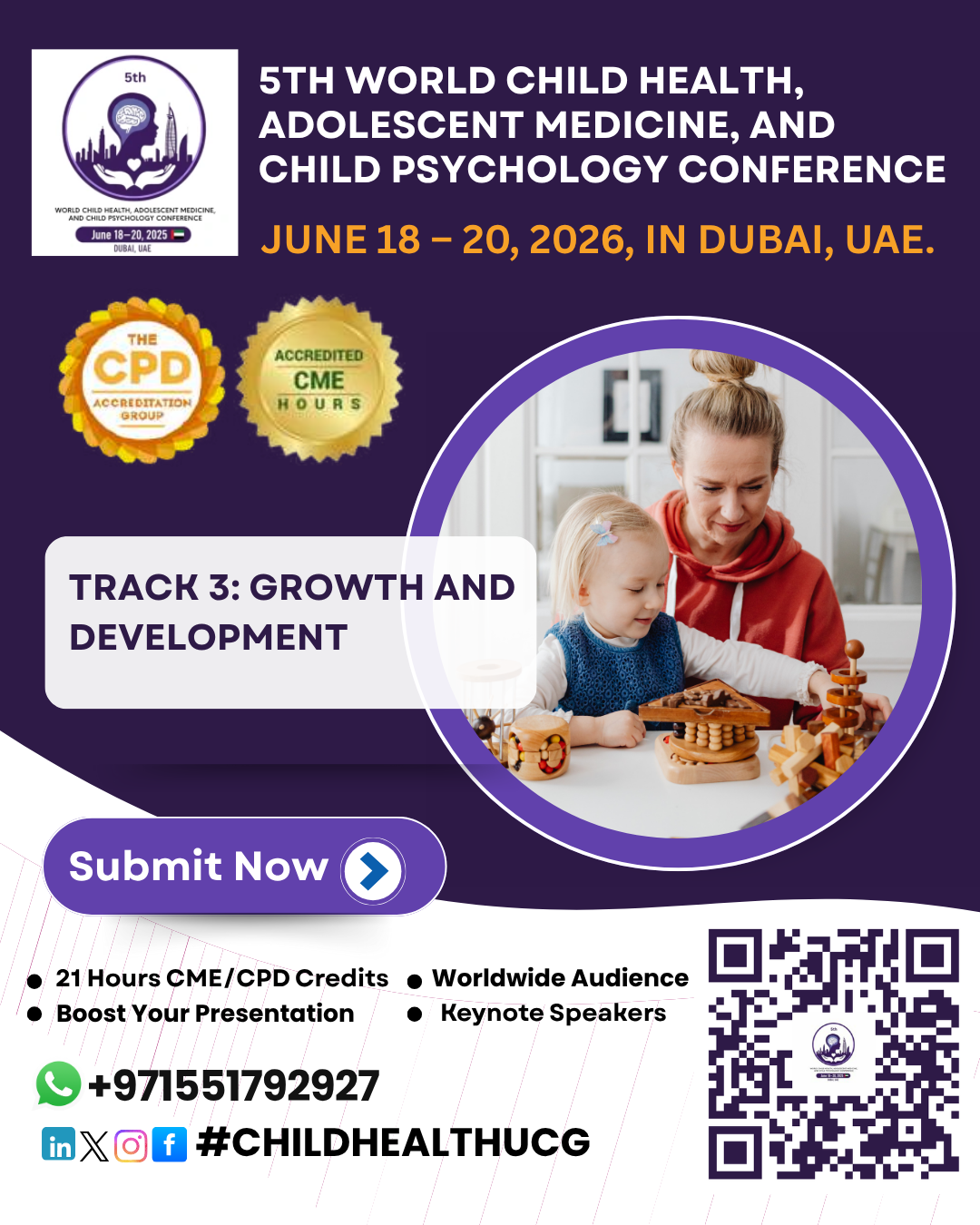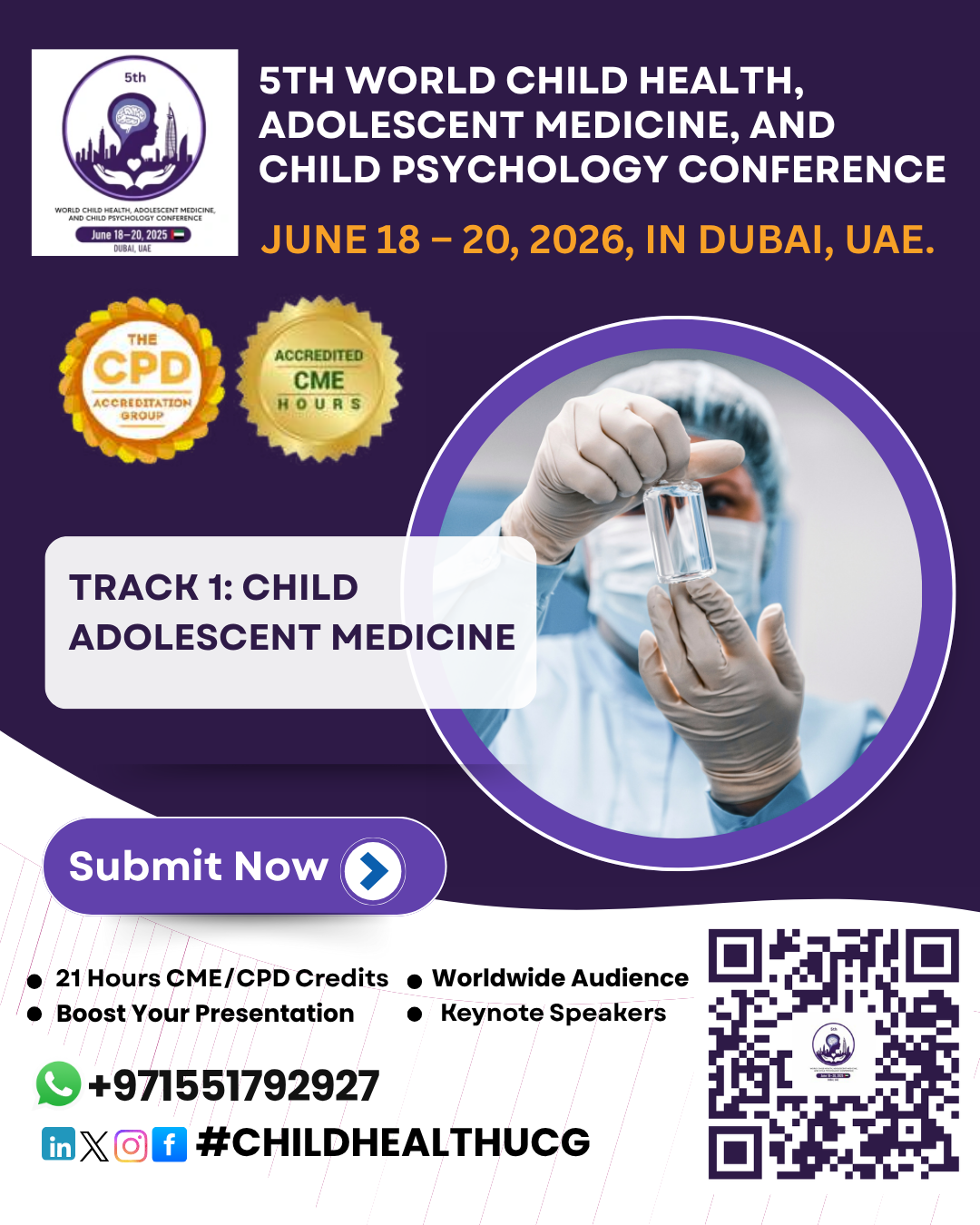



Sub Topics:
Adolescent Health, Pediatric Cardiology, Pediatric...

What is Adolescent Health?
Adolescent health focuses on the physical, mental,...

Sub Topics:
Physical Growth (Infancy, Childhood, Adolescence), Cognitive Development
(Piaget’s Stages, Information Processing), Emotional Development, Social
Development, Language Development, Motor Skill Development, Adolescent
Development, Early Childhood Development, Developmental Milestones,
Neurodevelopmental Disorders (e.g., Autism, ADHD), Growth Disorders (e.g.,
Growth Hormone Deficiency), Puberty and Hormonal Changes, Psychosocial
Development (Erikson’s Stages), Developmental Delays, Impact of Nutrition on
Development, Role of Genetics in Development, Environmental and Socioeconomic
Influences, Parental and Caregiver Roles, Screening and Early Intervention,
School Readiness and Educational Development.
What is Growth and Development?
Growth and Development encompass the physical, cognitive, emotional, and social changes that occur throughout an individual’s life, starting from infancy through adolescence and into adulthood. Physical growth refers to measurable changes in height, weight, and organ development, while cognitive development involves the maturation of thinking, problem-solving, and decision-making abilities. Emotional and social development focuses on forming relationships, managing emotions, and developing a sense of identity. These processes are influenced by a combination of genetic factors, environmental conditions, and life experiences. Monitoring growth and development is crucial for identifying potential delays or disorders early, ensuring timely interventions to support healthy outcomes.
Growth: Refers to the physical changes in size, height, weight, and body proportions that occur over time. It is most rapid during infancy, childhood, and adolescence.
Development: Encompasses the progression of cognitive abilities, emotional understanding, social skills, and motor skills as a person matures.
Key Aspects of Growth
and Development:
Physical Growth:
Infancy (0-1 year):
Rapid growth in height and weight.
Development of motor skills, such as rolling over, sitting, crawling, and eventually walking.
Growth of head circumference, indicating brain development.
Early Childhood (1-5 years):
Continued growth in height and weight, though slower than in infancy.
Development of fine and gross motor skills, such as running, jumping, drawing, and using utensils.
Improvement in coordination and balance.
Middle Childhood (6-12 years):
Steady growth in height and weight.
Development of physical skills, such as handwriting, sports abilities, and more complex movements.
Loss of primary teeth and the eruption of permanent teeth.
Adolescence (13-18 years):
Puberty brings significant physical changes, including rapid growth spurts, sexual maturation, and hormonal changes.
Development of secondary sexual characteristics (e.g., breast development in girls, voice deepening in boys).
Peak bone mass development and increased muscle mass.
Cognitive Development:
Infancy and Early Childhood:
Rapid brain growth, with critical periods for developing sensory and motor pathways.
Beginning of language acquisition, object permanence, and symbolic thinking.
Development of basic problem-solving skills and curiosity about the environment.
Middle Childhood:
Improved memory, attention span, and cognitive flexibility.
Development of logical thinking, understanding of cause and effect, and the ability to perform more complex tasks.
Enhanced language skills, including reading, writing, and understanding complex instructions.
Adolescence:
Development of abstract thinking, reasoning, and problem-solving abilities.
Increased capacity for planning, impulse control, and decision-making.
Growing awareness of self-identity and social roles.
Emotional and Social Development:
Infancy:
Formation of attachment bonds with caregivers.
Development of basic emotions like joy, fear, and anger.
Beginning of social interactions, such as smiling, cooing, and imitating facial expressions.
Early Childhood:
Development of self-awareness and understanding of others’ emotions.
Beginning of social play, sharing, and cooperation.
Learning to manage emotions and develop empathy.
Middle Childhood:
Increased understanding of social norms, rules, and relationships.
Formation of friendships and the ability to work in groups.
Development of self-esteem and identity based on achievements and feedback.
Adolescence:
Exploration of personal identity, independence, and autonomy.
Development of deeper relationships with peers and potential romantic relationships.
Greater emphasis on peer acceptance and social status.